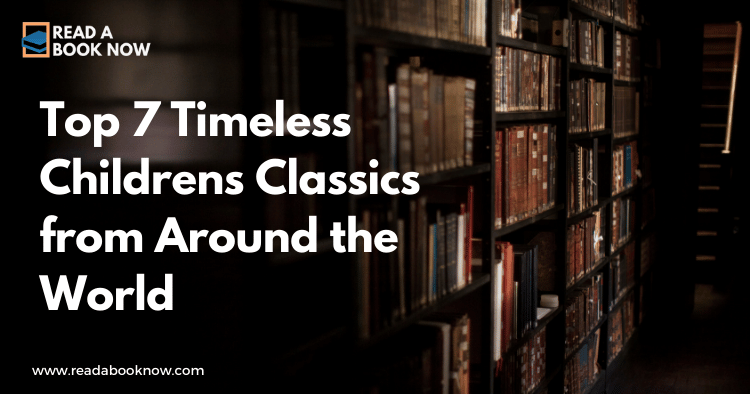Table of Contents
- Introduction
- 1. “The Little Prince” by Antoine de Saint-Exupéry
- 2. “Where the Wild Things Are” by Maurice Sendak
- 3. “The Tale of Peter Rabbit” by Beatrix Potter
- 4. “Pippi Longstocking” by Astrid Lindgren
- 5. “The Wind in the Willows” by Kenneth Grahame
- 6. “The Happy Prince” by Oscar Wilde
- 7. “The Secret Garden” by Frances Hodgson Burnett
- Conclusion
- FAQs
Introduction
Children’s literature has a unique ability to transport young readers to fantastical realms filled with adventure, imagination, and life lessons. Classics from around the world not only entertain but also educate, providing insights into different cultures and moral values. In this article, we’ll explore seven timeless children’s classics that have stood the test of time, captivating generations of readers.
“Books are a uniquely portable magic.” — Stephen King
1. “The Little Prince” by Antoine de Saint-Exupéry
First published in 1943, “The Little Prince” is a poetic tale about a young prince who travels from planet to planet, learning profound lessons about love, friendship, and the essence of human life. Originating from France, this enchanting story has been translated into over 300 languages, making it one of the most translated books in the world.
Key Themes
- Friendship: The relationships the Little Prince forms illustrate the importance of connection.
- Childhood Innocence: The narrative contrasts the wisdom of children with the often misguided priorities of adults.
Why It’s a Classic
Its deep philosophical undertones, paired with whimsical illustrations, make it a beloved choice among children and adults alike. For more insights, you can visit the official site.
“Grown-ups never understand anything by themselves, and it is tiresome for children to be always and forever explaining things to them.” — Antoine de Saint-Exupéry
2. “Where the Wild Things Are” by Maurice Sendak
Published in 1963, this American classic tells the story of Max, a young boy who sails to the land of the Wild Things. This picture book teaches children about emotions, imagination, and the solace of home.
Key Themes
- Imagination: Max’s journey emphasizes the power of creativity and fantasy in coping with feelings.
- Homecoming: The importance of family and love is poignantly illustrated in the ending.
Why It’s a Classic
Its unique illustration style and simple yet profound storyline have made it a staple in children’s literature. For further reading, check out Maurice Sendak’s biography.
“Let the wild rumpus start!” — Maurice Sendak
3. “The Tale of Peter Rabbit” by Beatrix Potter
Beatrix Potter’s 1902 tale of a mischievous rabbit has captured the hearts of children for over a century. Peter Rabbit’s adventures in Mr. McGregor’s garden teach valuable lessons about obedience and consequences.
Key Themes
- Adventure vs. Safety: The tension between exploration and the need for safety resonates with children.
- Nature Appreciation: The detailed illustrations foster a love for the natural world.
Why It’s a Classic
Potter’s charming illustrations and relatable characters have cemented this book as a favorite among readers. Learn more about Beatrix Potter here.
“Even the smallest one can change the world.” — Beatrix Potter
4. “Pippi Longstocking” by Astrid Lindgren
Pippi, an unconventional girl with bright red hair and unmatched strength, first graced the pages in 1945. Her adventures reveal the value of independence, creativity, and a zest for life.
Key Themes
- Individuality: Pippi represents freedom and the joy of being oneself.
- Adventure: Her escapades encourage children to explore their imaginations.
Why It’s a Classic
Pippi’s rebellious spirit and humor appeal to both children and adults, reinforcing the message that it’s okay to be different. For more background, visit Astrid Lindgren’s official website.
“Pippi Longstocking is a girl who is not afraid to be herself.” — Astrid Lindgren
5. “The Wind in the Willows” by Kenneth Grahame
This beloved British classic, published in 1908, follows the adventures of Mole, Rat, Toad, and Badger. Their escapades highlight friendship, loyalty, and the joys of nature.
Key Themes
- Friendship: The bond between the characters showcases the importance of camaraderie.
- Nature: The rich descriptions of the English countryside encourage a love for the outdoors.
Why It’s a Classic
Grahame’s lyrical prose and timeless themes make this book a treasure for readers young and old. Explore more about it here.
“There is nothing—absolutely nothing—half so much worth doing as simply messing about in boats.” — Kenneth Grahame
6. “The Happy Prince” by Oscar Wilde
Written in 1888, “The Happy Prince” is a poignant story about a statue who, with the help of a swallow, sacrifices his beauty to help the poor. This tale teaches empathy, kindness, and the importance of selflessness.
Key Themes
- Selflessness: True happiness comes from helping others, not from material wealth.
- Social Responsibility: The story prompts readers to think about their role in society.
Why It’s a Classic
Wilde’s beautiful prose and moral lessons resonate with readers, making it a timeless story. For additional resources, check out Oscar Wilde’s biography.
“Where there is sorrow, there is holy ground.” — Oscar Wilde
7. “The Secret Garden” by Frances Hodgson Burnett
Published in 1911, this enchanting tale follows Mary Lennox, a spoiled girl who discovers a hidden garden and transforms her life and the lives of those around her.
Key Themes
- Healing Power of Nature: The garden symbolizes renewal and the beauty of nature.
- Friendship and Transformation: The relationships Mary builds lead to personal growth and healing.
Why It’s a Classic
Its rich themes of redemption and growth continue to inspire readers of all ages. For more information, visit Frances Hodgson Burnett’s official site.
“Where you tend a rose, my lad, a thistle cannot grow.” — Frances Hodgson Burnett
Conclusion
These seven timeless children’s classics from around the world not only provide entertainment but also impart valuable life lessons. They encourage imagination, exploration, and compassion, nurturing the hearts and minds of young readers. Whether you’re revisiting these beloved tales or introducing them to a new generation, they remain as relevant today as when they were first published.
“Reading is a passport to countless adventures.” — Anonymous
FAQs
Q: What makes a children’s book a classic?
A: A children’s book is often considered a classic if it features universal themes, relatable characters, and enduring popularity that transcends generations.
Q: Why is it important for children to read classics?
A: Classics expose children to different cultures, ideas, and moral lessons, fostering a love for reading and critical thinking skills.
Q: Are these books suitable for all age groups?
A: While these books are primarily aimed at children, many offer lessons and themes that resonate with adults as well, making them enjoyable for family reading.
Q: How can I encourage my child to read these classics?
A: Start by reading together, discussing the stories, and relating the themes to everyday life. Creating a cozy reading space can also make storytime more inviting!
For more resources and information on children’s literature, check out The Children’s Literature Association. Happy reading!
Also, look for more classics in the following categories:
- Top 7




